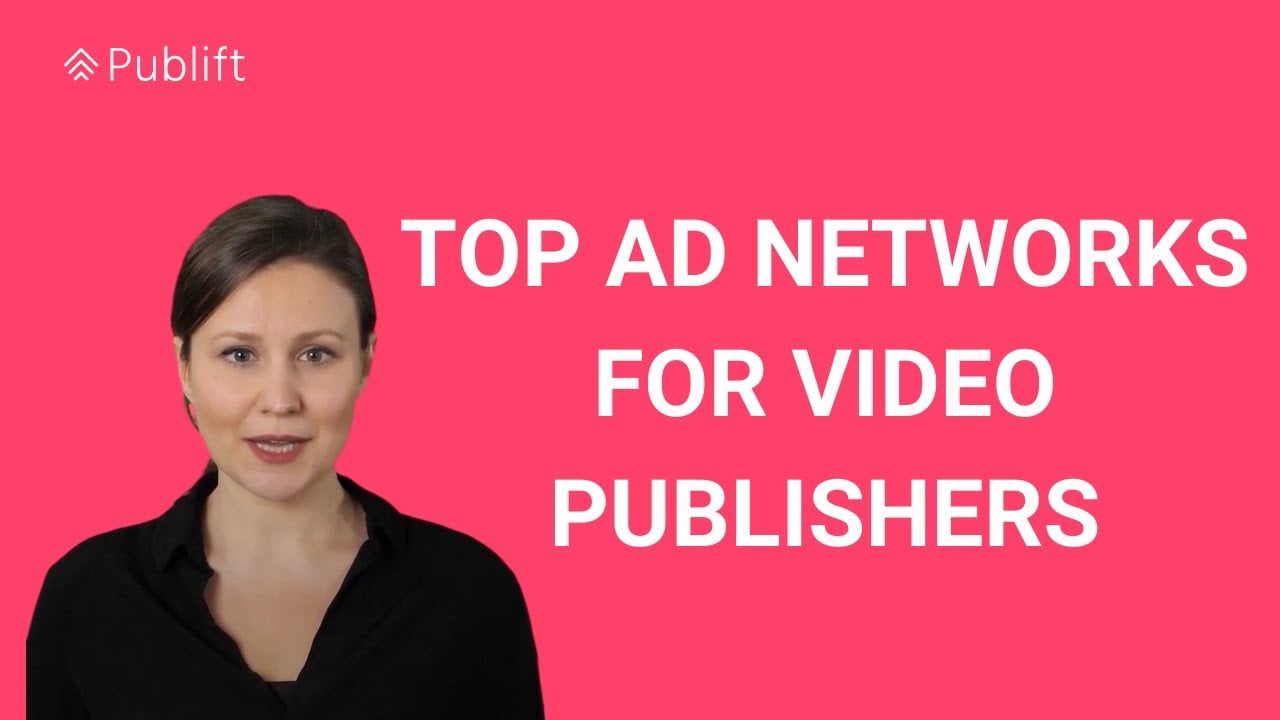- top ad networks for publishers
- 1. Ad Networks Connect Advertisers With Publisher Websites
- 2. Advertisers Seek High-Traffic Sites Related To Their Industry
- 3. Various Ad Formats Offered By Ad Networks
- 4. Setting Up Campaigns With Ad Networks
- 5. Installing Ad Tags On Publisher Websites
- 6. Revenue Generation And Performance Tracking For Publishers
- 7. Premium, Vertical, Horizontal, And Specialized Ad Networks
- 8. Popular Ad Networks For Publishers
In today’s digital age, where online advertising has become the lifeblood of countless businesses, ad networks play a crucial role in connecting advertisers with publishers. These networks act as the invisible bridge that brings together advertisers, eager to promote their products or services, and publishers, seeking to monetize their platforms.
But with countless ad networks out there, how does one sift through the options? In this article, we will delve into the world of top ad networksforpublishers.
From cost-effective options to those offering diverse ad formats, we will explore the key players in this dynamic field, empowering publishers to make informed decisions and optimize their revenue streams.
| Item | Details |
|---|---|
| Topic | Top Ad Networks for Publishers: Unlocking Monetization Potential |
| Category | Ads |
| Key takeaway | In today's digital age, where online advertising has become the lifeblood of countless businesses, ad networks play a crucial role in connecting advertisers with publishers. |
| Last updated | December 27, 2025 |
top-ad-networks-for-publishers">top ad networks for publishers
The top ad networks for publishers include Google AdSense, Amazon Associates, and Ezoic. Ad networks serve as intermediaries between advertisers and publisher websites, connecting advertisers with high-traffic sites related to their industry or target audience.
These networks offer various ad formats such as pop-up ads, native ads, banners, push notifications, and video ads. Advertisers set up campaigns with the ad network, specifying ads, budget, and target audience parameters.
Publishers then host ads on their websites by installing provided ad tags and generate revenue while tracking performance through their dashboard. Premium ad networks like Google AdX and Media.net sell space for notable publishers, leading to increased conversions and revenue.
Vertical ad networks provide topic-specific content and generate quality traffic, while horizontal ad networks offer more volume but have lower quality interactions. Specialized ad networks focus on specific ad types or devices.
Performance and affiliate ad networks allow influencers to connect with companies for product promotion. Overall, ad networks provide publishers with a simple way to monetize their websites with minimal effort and interaction with advertisers.Key Points:
- Top ad networks for publishers include Google AdSense, Amazon Associates, and Ezoic.
- Ad networks act as intermediaries between advertisers and publisher websites.
- These networks offer various ad formats such as pop-ups, banners, and video ads.
- Advertisers can set up campaigns with specific ads, budgets, and target audience parameters.
- Publishers generate revenue by hosting ads on their websites and tracking performance.
- Different types of ad networks specialize in topic-specific content, volume-based interactions, or specialized ad types/devices.
Sources
https://www.adpushup.com/blog/the-best-ad-networks-for-publishers/
https://kinsta.com/blog/ad-networks/
https://www.publift.com/blog/top-ad-networks
https://bloggingwizard.com/best-ad-networks/
Check this out:
💡 Pro Tips:
1. Consider joining premium ad networks to attract notable publishers and increase conversions and revenue.
2. Explore vertical ad networks that offer topic-specific content and generate quality traffic for your website.
3. Be mindful of the differences between horizontal ad networks and specialized ad networks. While horizontal networks may provide more volume, the quality of interactions may be lower.
4. Performance and affiliate ad networks can be a great opportunity for influencers to connect with companies and promote products.
5. In addition to Google AdSense and Amazon Associates, consider popular ad networks like Ezoic, Media.net, and Mediavine to monetize your website efficiently.
1. Ad Networks Connect Advertisers With Publisher Websites
Ad networks play a crucial role in connecting advertisers with publisher websites. These networks act as intermediaries, facilitating the buying and selling of advertising space.
Advertisers rely on ad networks to find high-traffic sites that align with their industry or target audience.
The ad network industry has evolved significantly, accommodating various ad formats to suit advertisers’ needs. Popular ad formats include pop-up ads, native ads, banners, push notifications, video ads, and more.
Ad networks leverage these formats to help advertisers reach their target audience effectively.
2. Advertisers Seek High-Traffic Sites Related To Their Industry
As advertisers want maximum exposure for their campaigns, they are keen on partnering with publishers who have established high-traffic websites in their industry or niche. This ensures that their ads are seen by the right audience, increasing the likelihood of conversions.
3. Various Ad Formats Offered By Ad Networks
Ad networks offer a wide range of ad formats to suit advertisers’ goals and preferences. These formats can be tailored to optimize engagement and user experience.
Some of the commonly used ad formats include:
4. Setting Up Campaigns With Ad Networks
Once advertisers decide to utilize an ad network, they set up campaigns that include ads and parameters such as budget and target audience. Ad networks provide a user-friendly interface where advertisers can easily configure their campaigns to align with their objectives.
5. Installing Ad Tags On Publisher Websites
After setting up campaigns, ad networks provide publishers with ad tags. These tags are pieces of code that publishers install on their websites to facilitate the display of ads.
Ad tags are specific to each campaign, ensuring the correct ads are shown on the appropriate pages.
6. Revenue Generation And Performance Tracking For Publishers
Publishers generate revenue by hosting ads on their websites. They earn money based on the ad format and the agreement they have with the ad network.
Ad networks typically offer a dashboard where publishers can track the performance of their ads in terms of impressions, clicks, and earnings.
7. Premium, Vertical, Horizontal, And Specialized Ad Networks
Ad networks can be categorized into different types based on their focus and offerings.
Premium ad networks specialize in selling advertising space for notable publishers. By partnering with premium ad networks, publishers can expect increased conversions and revenue due to the quality of the advertisers and the targeted audience.
Vertical ad networks target specific industries or topics, ensuring advertisers reach quality traffic within their niche. These networks offer specialized knowledge and targeted advertising options that cater specifically to certain markets.
Horizontal ad networks, on the other hand, focus on providing a larger volume of ads, reaching a broader range of audiences. While the interactions may be lower in quality than premium or vertical networks, the potential for higher revenue exists due to the sheer scale of exposure.
Specialized ad networks concentrate on specific types of ads or devices, allowing advertisers to reach their target audience through specialized platforms. These networks offer tailor-made solutions for specific advertising needs.
8. Popular Ad Networks For Publishers
There are several popular ad networks that offer great monetization opportunities for publishers. Some of these include:
Google AdSense: A widely used ad network that offers various ad formats and excellent revenue potential. Publishers can easily integrate it into their websites and benefit from Google’s extensive advertiser network.
Media.net: Another popular ad network that focuses on contextual ads relevant to the content of publishers’ websites. Media.net provides a high-quality ad experience and offers competitive revenue shares.
Data refreshed to reflect current ad-spend trends.
Amazon Associates: Amazon’s affiliate program enables publishers to monetize their websites by promoting Amazon products. Publishers earn commissions when visitors make purchases through their referral links.
Infolinks: Infolinks specializes in in-text advertising, where ads appear as relevant keywords within the content. It provides a non-obtrusive way of monetizing websites through targeted ads.
PropellerAds: This ad network offers a variety of ad formats, including pop-under ads, banners, and push notifications. Publishers can benefit from high CPM rates and regular payouts.
BuySellAds: BuySellAds is a platform where publishers can directly sell ad space on their websites. It allows publishers to have control over pricing and select the brands they want to work with.
These are just a few examples of the popular ad networks available for publishers. Each network offers unique features, business models, and minimum requirements, so publishers should carefully evaluate their options and choose the one that best suits their needs.
In conclusion, ad networks offer publishers a seamless way to monetize their websites. By connecting advertisers with high-traffic sites and providing a variety of ad formats, these networks are instrumental in maximizing revenue potential.
Buy Traffic • Self-Serve DSP Platform • Native Ad Network • Performance Marketing Tips • Programmatic Advertising











